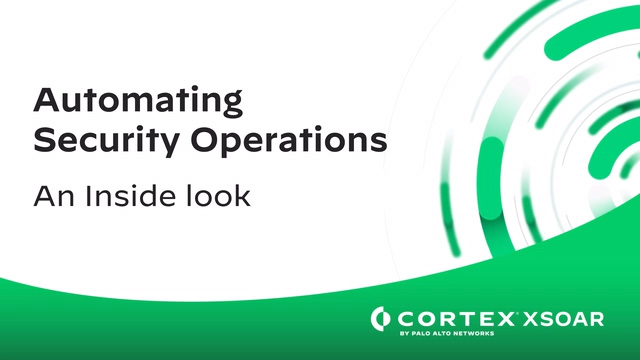What is Security Operations (SecOps)?
Security operations, often called SecOps, is the practice of managing and maintaining an organization's security posture through a combination of people, processes, and technology. It involves continuously monitoring, detecting, investigating, and responding to security incidents and threats. The primary goal of security operations is to prevent, detect, and respond to cybersecurity threats efficiently and effectively, minimizing impact and protecting an organization's critical assets.
The Importance of SecOps
SecOps seeks to foster more collaboration between IT security and IT operations to help prioritize network and data security and mitigate risk without sacrificing IT performance. It also provides a more narrow focus than the similar concept of DevSecOps, as DevOps teams are not required to create and implement an organization’s security measures.
A key tenet of SecOps is to ensure that security is a fundamental part of every project and included in even the earliest stages of project development.
SecOps vs SOC
The SecOps team is a team of highly skilled IT and security professionals who monitor threats and assess risk across an organization. The SecOps team is the lifeblood of a security operations center (SOC). A SOC is a centralized hub (physical, virtual or both) from where the security team operates. The SOC helps to facilitate collaboration across security personnel and helps to streamline security operations.
The number of roles and SOC team size can vary depending on an organization’s size and need, but it can range from 5-14 members. Roles include SOC analysts, security engineers, a security manager, an IT operations manager and system admins, who all report up to the chief information security officer (CISO).
SecOps Tools
There are a number of SecOps tools that have been created to help security teams successfully run the SOC. These tools have grown in number as technology evolves and can present a complex mix of siloed tools to manage. Fortunately, consolidation of capabilities has begun across the industry to provide less tools with more functionality.
Tools that help SecOps teams build a proactive defense include:
- Endpoint protection
- Security information and event management (SIEM)
- Network detection and response
- Endpoint detection and response
- User and entity behavior analytics (UEBA)
- Extended detection and response (XDR)
- Security orchestration, automation and response (SOAR)
SecOps Challenges
Constant technological innovations continue to advance business operations and development forward, often at the expense of proper security. Security has continued to advance as well, but businesses have been slower to address the need proactively and more reactive as new security vulnerabilities are identified and new threats emerge.
While adversaries continue to invest in new tools like machine learning, automation and AI, legacy SOCs built on security information and event management (SIEM) fail to keep up with digital transformation and advanced attacker techniques. Additionally, the shortage of security professionals and slow implementation of SecOps tools to automate processes (and avoid analyst burnout) continues to be a big challenge.
SecOps challenges that arise from legacy SOC environments include:
- Lack of visibility and context
- Increased complexity of investigations
- Alert fatigue and “noise” from a high volume of low-fidelity alerts generated by security controls
- Lack of interoperability of systems
- Lack of automation and orchestration
- Inability to collect, process and contextualize threat intelligence data
The Benefits of SecOps
The goal of SecOps is to improve an organization’s security posture, identify security issues and detect vulnerabilities, and facilitate a unified approach to security across individual departments. This approach helps with cross-team collaboration to complete tasks more efficiently and eliminate duplication of effort. Implementing a SecOps model can help identify threats earlier, reduce risk of breaches, increase incident response times, and as a result, help maintain business continuity and reputation.
Take a look at how Palo Alto Networks’ own Security Operations team works to automate their SOC.
Using Automation and AI in the SOC
SecOps teams continue to struggle with manual tasks, including the sheer number of security alerts and threat investigations they must conduct on a daily basis. By leveraging automation and analytics, SecOps teams can better identify, investigate and remediate security threats and incidents. According to Forrester, the need to fully automate SOC operations is a long-term goal for organizations, with over 70% already beginning their automation journey.
By leveraging artificial intelligence (AI) and machine learning (ML), security events can be identified quickly without generating low-value alerts that require analyst time, attention and manual remediation. AI and ML can identify important security events in an organization, with high fidelity, by stitching together data from multiple sources while reducing the time and experience required in the SOC.
Best Practices: Building a Strong SOC Foundation
It is important for SecOps teams to have the support of senior executives to feel empowered to achieve their goals. The CISO typically bridges the gap between the SecOps team and the exec teams to align cybersecurity with business objectives.
Security leaders can take steps now to unify security across the organization and simplify security operations. They need to:
- Reduce mean time to repair (MTTR) by automating aspects of incident response: Automation of time-consuming and manual tasks during the investigation and response process will avoid missed alerts and decrease investigation time.
- Increase automation of repetitive, manual tasks: Reducing the need for tactical, tedious work will give analysts more time to focus on strategic initiatives.
- Integrate security tools: Integrating security tools into a centralized platform helps to unify logging, alert correlation and orchestrated response.
To learn more about the consolidated platform approach, download our white paper, Redefining SecOps in the Era of AI.

